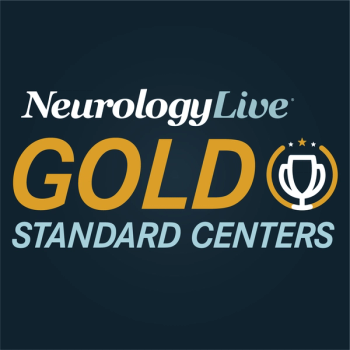
At the conclusion of the analysis, lemborexant was shown to be safe, with significant improvements seen in REM latency, total REM sleep, and other measures.

Marco Meglio, Assistant Managing Editor for NeurologyLive, has been with the team since October 2019. Follow him on Twitter @marcomeglio1 or email him at [email protected]

At the conclusion of the analysis, lemborexant was shown to be safe, with significant improvements seen in REM latency, total REM sleep, and other measures.

The chief medical officer of Harmony Biosciences provided perspective on a proof-of-concept study assessing pitolisant’s (Wakix) clinical benefit in reducing excessive daytime sleepiness individuals with Prader-Willi syndrome.

At the conclusion of the 6-week treatment period, preliminary analyses suggested a greater trend toward improvement on subjective measures of insomnia compared with objective sleep measures.

More than 25% of patients in the pooled meta-analysis developed OSA after undergoing vagus nerve stimulation treatment, prompting the need for routine screening for the condition.

Nearly all patients showed improvement on the Patient Global Impression of Change scale, regardless of sleep inertia status, assessed through a visual analog scale.

Following 13 weeks of treatment with once-nightly sodium oxybate, some patients in the 7.5 g and 9.0 g groups showed complete resolution of cataplexy attacks.

PUMAS significantly alleviated depression relative to controls whereas cognitive behavioral therapy-insomnia did not differ from either group.

Among patients with post-acute sequelae from COVID-19 infection, self-reported cognitive symptoms were correlated with severity of fatigue, anxiety, and depression, but not subjective sleep disturbance.

In a study of 59 individuals with obstructive sleep apnea, solriamfetol yielded cognitive improvements at post-dose time points throughout the day, along with improvements in Patient Global Impression of Severity.

Neurofilament light, a biomarker elevated in neurodegeneration and dementia, was higher among poor sleepers with Pittsburgh Sleep Quality Index scores of less than 5.

Most patients completed at least 3 years of treatment, with no new safety signals observed and a treatment discontinuation rate of 5.3%.

Using the Modified Fatigue Impact Scale, patients either forced to exercise or who volunteered saw significant improvements over a 12-week period.

With few neuropalliative care services available in the US, the University of Rochester stands as a prime example of how a successful program can transform patient care.

Factors such as older age, poor steroid responsiveness, and plasma exchange were associated with NMOSD phenotype, while normal or thinned retinal nerve fiber layer and short-segment hyperintensity were associated with idiopathic optic neuritis.

The combination of EDSS scores above 6 and age over 55 years resulted in higher serious infection rate that was nearly double that seen in the overall population.

In mixed-effect analyses adjusting for multiple cofounders, changes in inflammatory gene expression correlated inversely with changes in patient-reported stress, loneliness, hair cortisol, and aspects of interoceptive awareness.

In July, the FDA is expected to make a decision on lecanemab (Leqembi), an antiamyloid therapy previously approved under the accelerated approval pathway, for a potential traditional approval for early-stage Alzheimer disease.

Investigators observed significant correlations between processing speed and arterial stiffness among patients with multiple sclerosis, but not in healthy controls.

Over the 96-week treatment period, ublituximab-treated patients outperformed teriflunomide-treated patients on several domains of the Fatigue Impact Scale.

Despite similar proportion of females and ever-smokers, age of onset of multiple sclerosis was significantly earlier for Latinx patients compared with White non-Latinx individuals.

Investigators observed significant decreases in Modified Fatigue Impact Scale and Fatigue Severity Scale with the low-fat diet in relation to controls.

Cornelia Drees, MD, senior associate consultant, Department of Neurology, Mayo Clinic, discussed the potential of microburst vagus nerve stimulation as a more targeted treatment for drug-resistant epilepsy.

Tiffany Braley, MD, MS, associate professor of neurology, University of Michigan, provided insight on the challenges of fatigue in multiple sclerosis, and where research efforts should be directed to.

The research, which highlighted stressors occurring in both childhood and adult stages contributing to MS disability, could inform conversations regarding stress reduction techniques for patients with MS.

Kathy Zackowski, PhD, OTR, associate vice president of research at the National MS Society, provided insight on the ongoing efforts to treat progressive MS, including strategies to develop remyelinating treatments.

On multiple phase 3 trials, treatment with STS101 resulted in numerical differences on primary outcome measures of pain freedom and freedom from the most bothersome symptoms.

Pitolisant, a therapy approved for patients with narcolepsy, is currently being assessed in 200 individuals with idiopathic hypersomnia, with change in excessive daytime sleepiness as the primary outcome.

Over a 72-week treatment period, vatiquinone showed significant impacts on bulbar and upright stability subscales of the modified Friedreich Ataxia Rating Scale score.

Investigators observed similar rates of intracranial hemorrhage for patients with minor stroke on a dual thrombolytic treatment vs those who received alteplase alone.

In a 6-month trial, more than 85% of adults on CBD showed significant reduction in the number of monthly seizures, suggesting this treatment may be an effective adjuvant option.